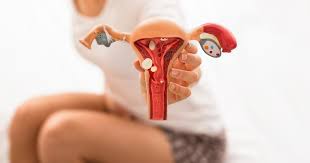Recurrent Anal Fistula-A Clinical Challenge despite Advances in the Treatment of Anal Fistula

Anal fistula is a common anal condition but not an easy one to treat. Anal fistula treatment remains a challenge for surgeons owing to its persistence or recurrence. In fact, recurrent anal fistulas after surgery are more difficult to treat as there is even more risk of re-recurrence and continence disturbance (fecal incontinence). So, the high recurrence rate of fistula in ano and its treatment remains an important challenge for colorectal surgeons worldwide.
Before understanding the challenges associated with anal fistula and its recurrence, let’s first understand what an anal fistula is.
In simple words, an anal fistula is an infected tunnel between the skin and the anus. Mostly, the cause of anal fistula is an infection in an anal gland that has spread to the skin leading to symptoms like pain, swelling and pus or blood discharge from the anus. Anal fistula treatment involves surgical procedures like fistulotomy, Seton techniques, Advancement flap procedure, LIFT procedure, Endoscopic ablation, Laser surgery, Fibrin glue, Bioprosthetic plug, etc.
Now, the challenge is that, even with the availability of so many techniques, there is a high risk of recurrence of the fistula after surgical intervention depending upon the location of the fistula, kind of procedure performed, the expertise of the surgeon, extent of disturbed anatomy of the perianal region, unexpected findings, the effect of excess fibrosis and scarring after surgery and lack of proper postoperative care in the early and late periods following the surgery. Adding more to the irony, a recurrent anal fistula is itself a more prominent independent predictor of re-recurrence of fistula. It has been observed that previous fistula surgery increases the odds of recurrence after further surgery by two to three folds. This means that fistulas can keep on coming back even after surgery.
So, it can be concluded that management of fistula in the first place is very crucial for its proper healing and to prevent a recurrence. As far as the management of recurrent fistula is concerned, it starts with careful assessment of the patient to identify the cause of recurrence, followed by identification of the fistula anatomy so as to plan the most appropriate surgical treatment.
According to Dr. Sandip Banerjee, a successful fistula surgery requires proper diagnosis, a perfectly performed and reported MRI, along the surgeon’s expertise and the method of surgery. Dr. Sandip Banerjee, a standout fistula surgeon in Delhi/ NCR and one of the Best Proctologists in India, performs LASER FILIAC, LIFT, and Fistulotomy for fistula. In almost all cases Dr. Banerjee performs a single setting surgery with a success rate of more than 90%. He is continuously sharpening his skills and has successfully handled some very complex cases of fistula, including recurrent fistulas with multiple tracks.
Anal Fistula mainly affects people of working age. Its symptoms include abscess, pain, discharge of pus and blood impair quality of life (QOL). There is a case study of one female patient with 2 failed surgeries of fistula in ano one in Gwalior and another one in Guwahati came to Dr. Sandip after losing all hopes to be well again. Dr. Sandip examined the patient and diagnosed it as a case of a Complex Transsphincteric fistula with an abscess in the perianal region. He successfully performed Laser Filac Surgery with Abscess Drainage with Internal Opening Closure with Myocutaneous Flap.
At Pelvinic, we understand the pain of every patient and work hard to assure their smooth road to recovery.



